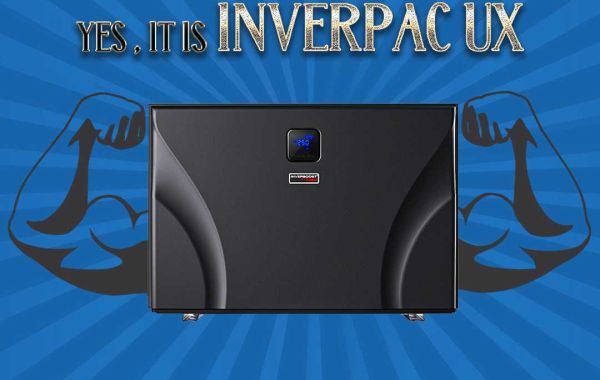Introduction
Swimming is a popular recreational activity enjoyed by people of all ages. Whether it's a community pool, a public water park, or a luxurious resort pool, ensuring the water quality is of utmost importance. Poor water quality in swimming pools can lead to various health issues and pose a significant risk to the well-being of swimmers. To maintain high standards of hygiene and safety, public swimming pools adhere to specific water quality standards. However, these standards can vary across different regions and jurisdictions. This article aims to provide a comparative study of water quality standards in different public swimming pools, highlighting the importance of maintaining optimal water conditions for the health and safety of swimmers.
The Significance of Water Quality in Swimming Pools
The quality of swimming pool water must be maintained for a variety of reasons. For starters, it helps to reduce the spread of waterborne illnesses. A large number of people utilize public swimming pools, boosting the risk of contamination. To eradicate hazardous bacteria, viruses, and parasites that can cause illnesses such as gastrointestinal infections, skin infections, and respiratory difficulties, proper disinfection and filtration systems are required.
Second, good water quality promotes swimmers' safety and comfort. Poor water quality can cause skin and eye discomfort, reducing pool guests' overall pleasure. Inadequate water balance and disinfection can also encourage the growth of algae and other microbes, making the pool water hazy and unappealing.
Water Quality Standards and Regulations
Water quality standards for public swimming pools are established by regulatory authorities to protect public health and ensure a safe swimming environment. These standards typically encompass various parameters, including disinfectant levels, pH levels, total alkalinity, temperature, and clarity of the water. Let's examine the water quality standards in different regions to understand the variations that exist.
United States
In the United States, the Centers for Disease Control and Prevention (CDC) provides guidelines and recommendations for maintaining water quality in public swimming pools. The CDC's Model Aquatic Health Code (MAHC) serves as a comprehensive guide for health departments to develop and implement their pool regulations.
The MAHC covers a wide range of topics, including water quality and disinfection. It recommends maintaining free chlorine levels between 1-3 parts per million (ppm) and pH levels between 7.2 and 7.8. The water should also be regularly tested for parameters such as total alkalinity, calcium hardness, and cyanuric acid levels. Additionally, the MAHC provides guidelines for the proper use of secondary disinfection systems, such as UV irradiation and ozone treatment.
Europe
In Europe, water quality standards for swimming pools are outlined by the European Committee for Standardization (CEN). The CEN's standard EN 15288-2 provides specific guidelines for the operation and maintenance of swimming pools. It emphasizes the importance of maintaining appropriate disinfectant levels, pH levels, and water clarity.
The standard recommends a free chlorine concentration between 0.5 and 2.0 ppm and a pH range of 7.0 to 7.6. It also addresses the importance of regular water testing and the need to maintain proper circulation and filtration systems to ensure adequate turnover rates.
Australia
In Australia, water quality standards for public swimming pools are established by the Department of Health in each state or territory. The standards may vary slightly across different jurisdictions, but the overall objective remains the same: to protect public health and promote safe swimming conditions.
The standards typically require regular monitoring of disinfectant levels, pH levels, and other water parameters. For example, in New South Wales, the Health Protection Regulation 2013 stipulates that free chlorine levels should be maintained between 1.0 and 3.0 ppm, with a pH range of 7.0 to 8.0. Regular testing for water balance, total alkalinity, and calcium hardness is also required.
Asia
In Asia, water quality standards for public swimming pools can vary depending on the country and local regulations. For example, in Singapore, the National Environment Agency (NEA) sets the water quality standards for swimming pools. The NEA recommends maintaining free chlorine levels between 1.0 and 3.0 ppm and a pH range of 7.2 to 7.8. Regular monitoring of other parameters such as turbidity and temperature is also necessary.
Similarly, in Japan, the Ministry of Health, Labour, and Welfare establishes guidelines for maintaining water quality in swimming pools. These guidelines include maintaining appropriate chlorine levels, pH levels, and water clarity. The chlorine concentration should be between 0.3 and 3.0 ppm, while the pH range should be between 7.2 and 7.8.
Africa
In Africa, water quality standards for public swimming pools may vary across different countries and regions. While there is no unified set of standards for the entire continent, individual countries often establish their regulations to ensure safe swimming conditions. Let's explore some examples of water quality standards in African countries:
South Africa: In South Africa, the National Norms and Standards for Domestic Water and Sanitation Services provide guidelines for water quality in public swimming pools. The standards require regular monitoring of pH levels, disinfectant levels, temperature, and clarity. The recommended pH range is between 7.2 and 7.6, and the free chlorine concentration should be maintained between 0.5 and 2.0 ppm.
Kenya: In Kenya, the Public Health Act and Public Health (Swimming Pool) Regulations outline the water quality standards for public swimming pools. The regulations stipulate regular monitoring of disinfectant levels, pH levels, and water clarity. The recommended free chlorine concentration ranges from 1.0 to 3.0 ppm, and the pH level should be between 7.2 and 7.6.
Egypt: In Egypt, the Ministry of Health and Population sets water quality standards for public swimming pools. The guidelines require regular testing of disinfectant levels, pH levels, and turbidity. The recommended free chlorine concentration ranges from 1.0 to 3.0 ppm, and the pH level should be between 7.2 and 7.6.
These are just a few examples of water quality standards in African countries, and it is important to note that variations exist across different regions and jurisdictions within each country.
Conclusion
Maintaining optimal water quality in public swimming pools is essential to ensure the health and safety of swimmers. While water quality standards may vary across different regions and jurisdictions, the overarching goal remains consistent: to provide a safe and enjoyable swimming experience. Adhering to these standards, which typically involve regular testing, disinfection, proper maintenance of pool facilities, using UV Irradiation and Ozone Treatment, and installing a pool heater from a reputed heat pump manufacturer, helps prevent waterborne illnesses and promotes overall well-being. In these methods mentioned, building a swimming pool water heater system is a new but cost-effective way to inhibit the growth of certain pathogens that thrive in colder temperatures and enhance the effectiveness of disinfection systems, while delivering warmth for swimmers. With the trend of stricter regulations, more and more pool equipment like pool heaters will emerge to improve the water quality and safeguard people’s health.
Public health authorities, such as the CDC in the United States and the CEN in Europe, play an indispensable role in establishing guidelines and regulations for water quality in swimming pools. It is the responsibility of pool operators and managers to adhere to these standards and implement effective maintenance and treatment protocols.
By recognizing the importance of water quality and understanding the variations in standards, we can work towards creating a global consensus on the best practices for maintaining safe and hygienic swimming environments. Ultimately, ensuring the highest standards of water quality in public swimming pools will contribute to the well-being and enjoyment of swimmers everywhere.
Tag: european heat pump manufacturers, heat pump wholesalers, pool water heater, swimming pool heat pump, pool water heater, pool heat pump










